Chronique:Canon Fodder - Encyclopedia Extravaganza
ISSUE 128
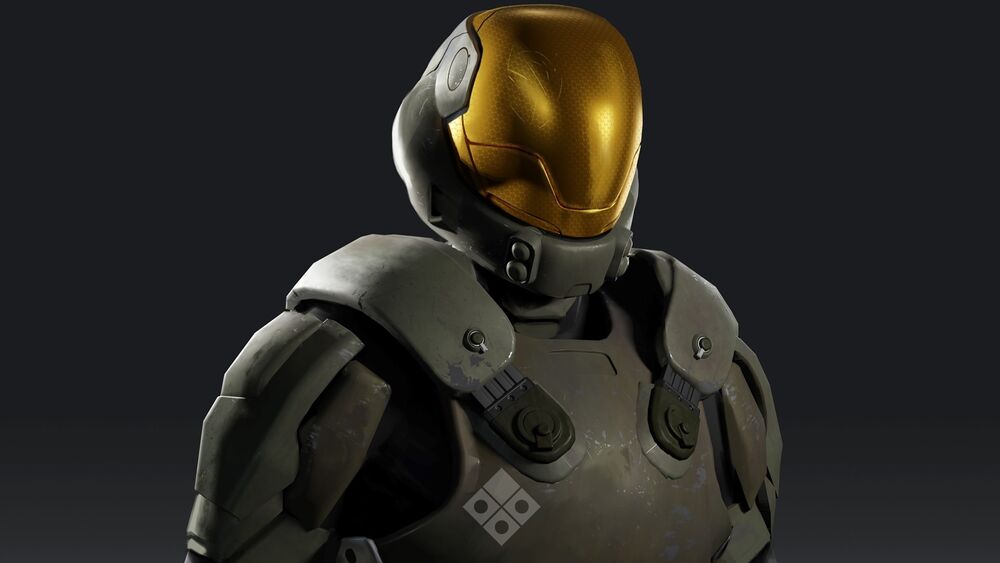
Alex Wakeford
6/1/2022
Welcome back, fiction fans. We promised you a deeper dive into the Halo Encyclopedia in this issue, and that's exactly what we've got in store for you today!
Last time, we covered the lore around Lone Wolves, Season 2 of Halo Infinite, which introduced new story elements to the game's ongoing seasonal story around the Spartan Academy.
In this issue, we're exploring the recently released Halo Encyclopedia, a vast directory of fiction that explores the intricacies of this epic saga that spans over a hundred millennia, far-flung alien worlds, ships, vehicles, weapons, technology, and the major players of its various factions—complete with stunning, never-before-seen art.
As a reminder: You can pick up your own copy of the Halo Encyclopedia here, or if you fancy a copy enshrined within a Forerunner cylix slipcase then secure the impressive Deluxe Edition here.
Additionally, since last we spoke, the digital edition is now available which you can grab here!
That's quite enough preamble, don't you think? It's time to look at some cool new art.
Art Attack[modifier le wikicode]
One of the great highlights of the Halo Encyclopedia has been, of course, the sheer volume of incredible art that has brought to life so many things in the Halo universe which previously existed only in the mind's eye.
Let's go over a few, shall we? Maybe take a look at some of the pieces in enhanced, unfettered view...
PART 1: JUMPING OFF THE PAGE
The layout and structure of the encyclopedia inevitably necessitated that the arrangement of things like character portraits and other art pieces would be cropped and adjusted to serve the needs of the book.
Here, however, we have an opportunity to show the full spread of some of these pieces for various elements of the Halo universe and we're excited to have had the opportunity to depict some of them for the first time.
ABADDON
Art by David Heidhoff
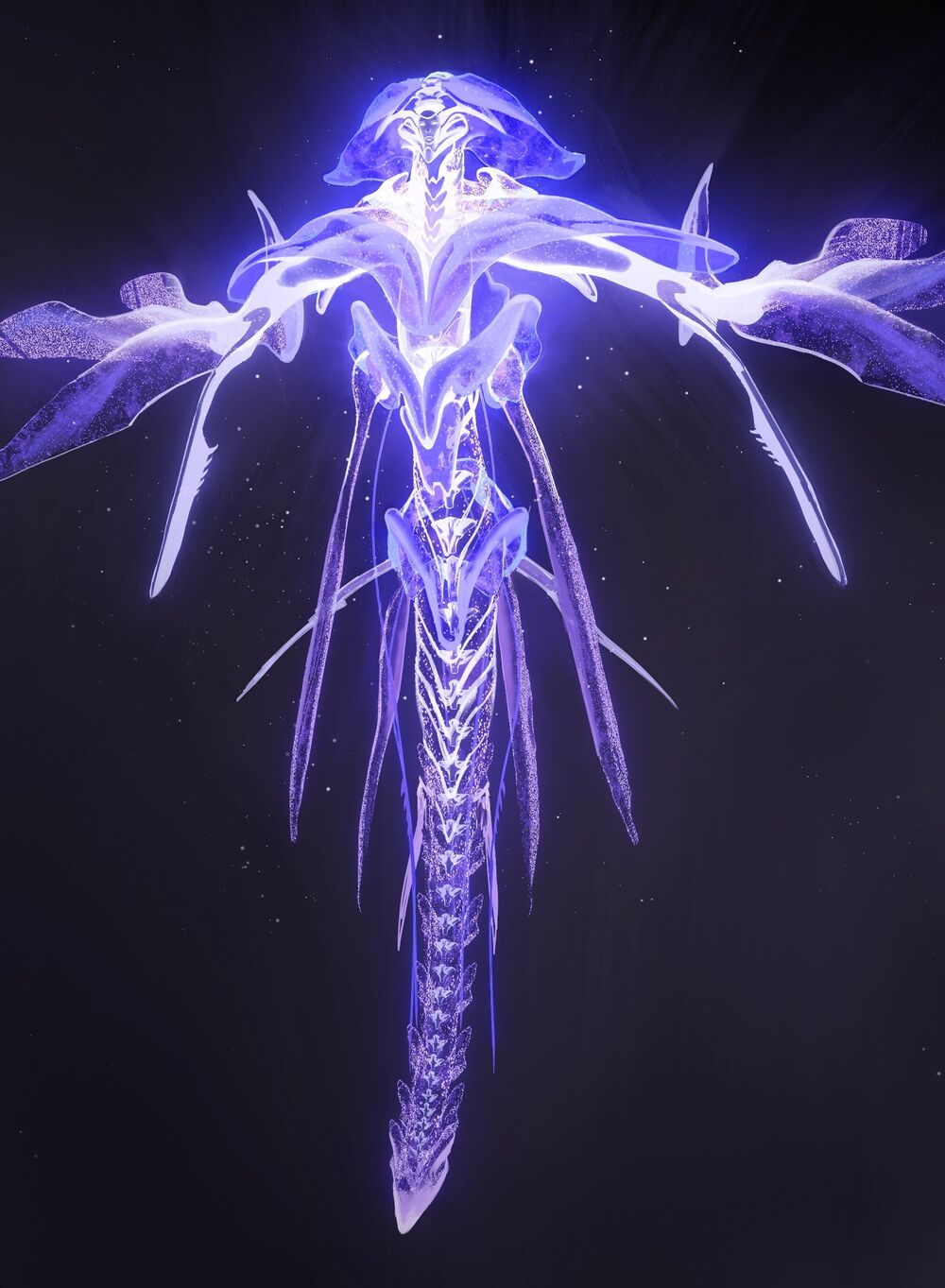
Abaddon, a Precursor construct that served as an overseer of-sorts of the Domain, played a central role in 'Promises to Keep' from the Halo: Fractures anthology novel.
Its shape and form feels... familiar, does it not?
KALMIYA
Art by Stanton Feng
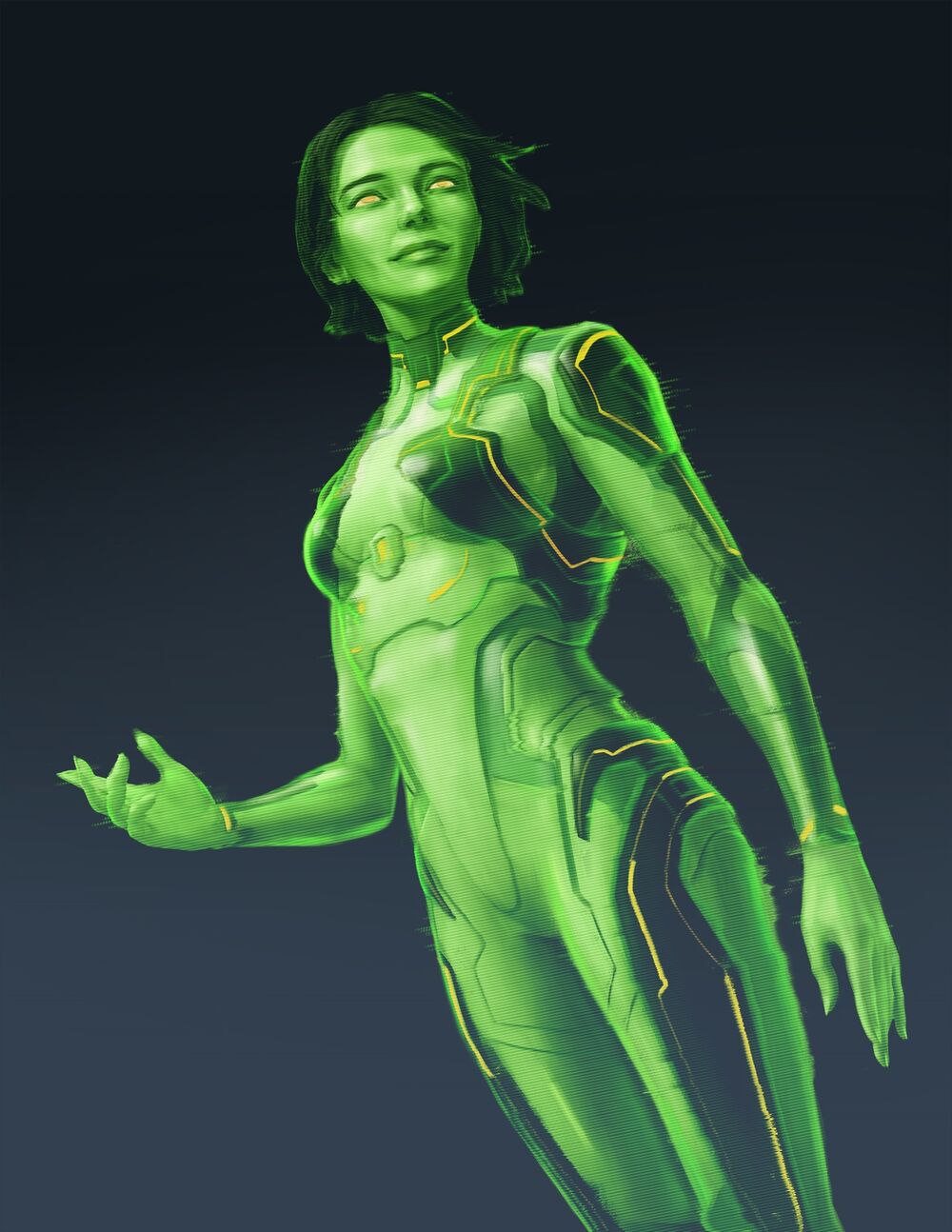
UNSC AI KMA 0991-X has been something of a canonical curiosity over the years. Created in 2537 by Dr. Halsey, she was a third-generation smart AI who would not formally end her service until the fall of Reach in 2552, seemingly surpassing the limits of an AI's seven-year lifespan.
Dr. Halsey accomplished this by decompiling, selectively editing, and reconstructing Kalmiya many times over as she used this AI to test and refine techniques and algorithms for data analysis and cyberwarfare that would prove to be instrumental in Cortana's creation and service. In many ways, Kalmiya is regarded as something of an 'older sister' to Cortana in terms of their “lineage.”
HELIOSKRILL
Art by Horia Dociu
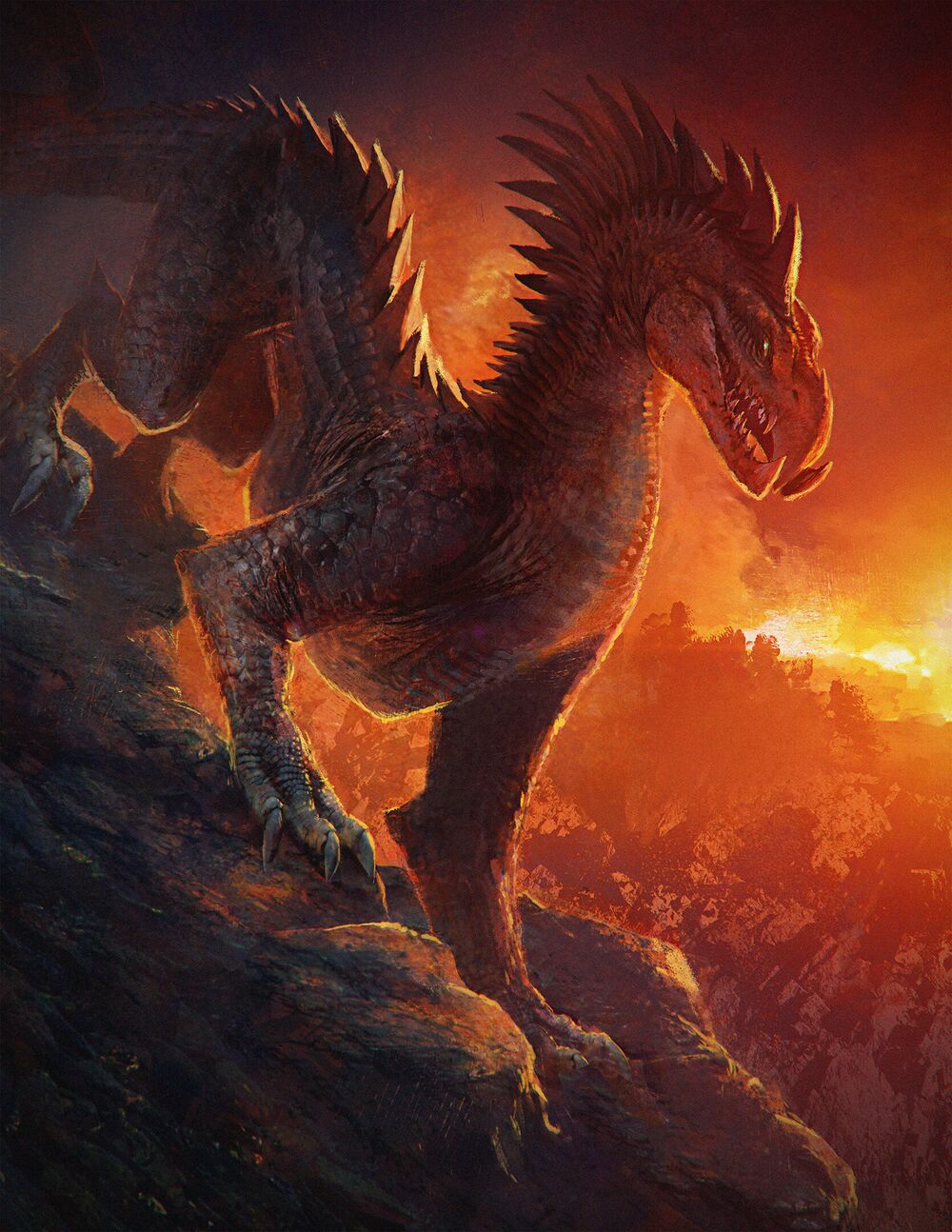
[*Sir David Attenborough voice*]
The helioskrill. These apex predators tend to live in the mountainous regions of Sanghelios and are known for their patience and cunning, capable of disguising themselves through imitation. To the Sangheili, these creatures have been the source of a great deal of inspiration—their morphology in particular often served as the design basis for Sangheili ceremonial armor and similarly inspired the HELIOSKRILL-class Mjolnir.
Depicted for the first time in the Halo Encyclopedia, this gorgeous piece from Horia Dociu showcases that design influence.
AUDACITY
Art by Jacob Gonzalez

Forerunners enjoyed their dominion over Path Tolgreth, the Milky Way, and found intergalactic space to be unattractive—a vast, unknown void where their self-appointed role meant very little.
As such, the Librarian's proposal to the ecumene council of travelling to Path Kethona—the Large Magellanic Cloud outside of our galaxy—in order to ascertain the origins of the Flood, posed a unique challenge to the Builders.
The design and construction of the Audacity took ten years, both in-universe and in real life as we're approaching the tenth birthday of Halo: Silentium! So, here's a proper look at the ship as depicted in the encyclopedia.
GLORY-OF-A-FAR-DAWN
Art by Jacob Gonzalez
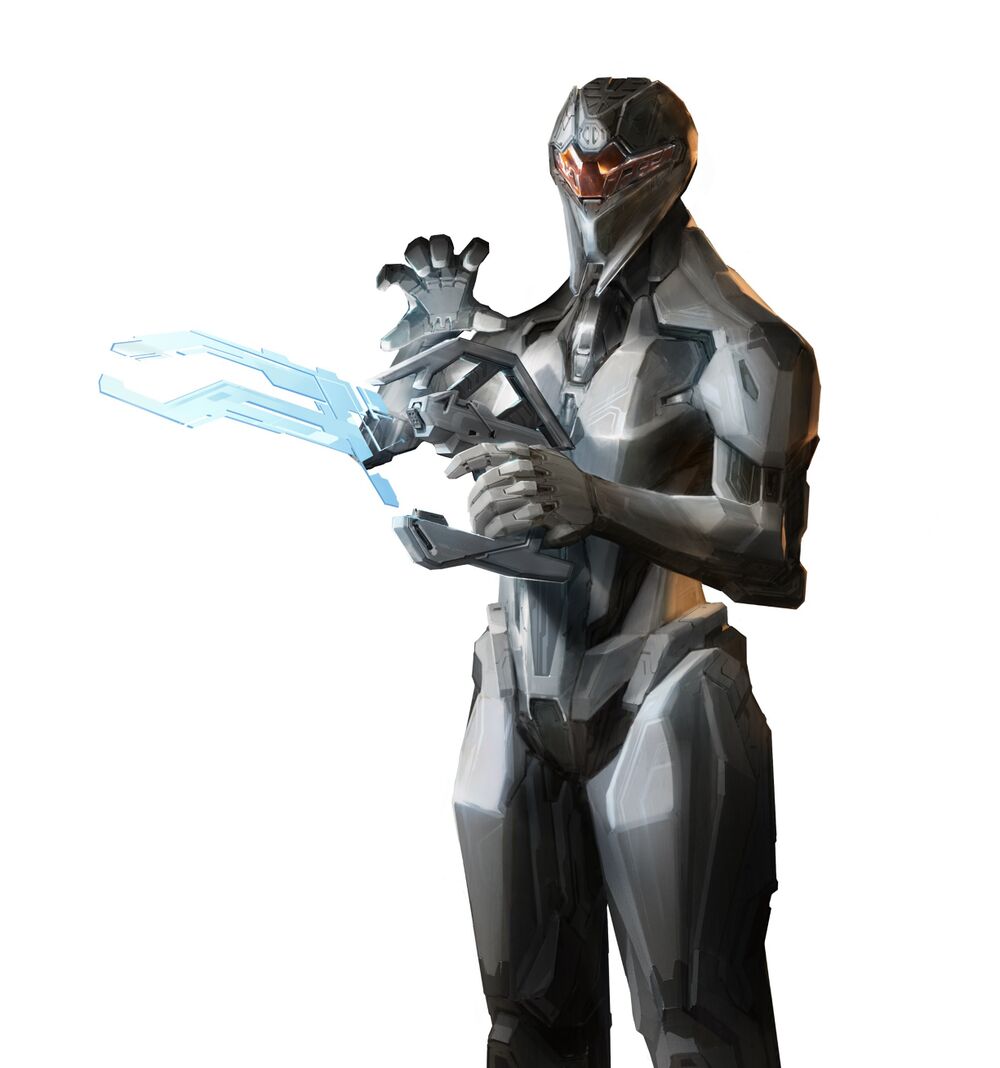
Glory-of-a-Far-Dawn was a Warrior-Servant who first appeared in Halo: Cryptum. When Mendicant Bias arrived at Maethrillian with the rogue Zeta Halo (then known as Gyre 11), she rescued First Councilor Splendid-Dust-of-Ancient-Suns and Bornstellar-Makes-Eternal-Lasting.
Together, they escaped the devastating assault on the Forerunner capital as Mendicant Bias seized control of five of the Halos and attempted to fire them, heading through a slipspace portal to the Senescent Ark.
After parting ways, Glory would later go on to reunite with Bornstellar on the Neoteric Ark at the very end of the Flood War as one of a small number of survivors present at the great foundry before the final pyrrhic measure was enacted to cleanse the galaxy. A century later, as the surviving Forerunners made their final act of penance, reseeding the galaxy with life, Glory would return to the shattered capital of Maethrillian one last time where she met her ultimate fate during a confrontation with the vengeful Abaddon.
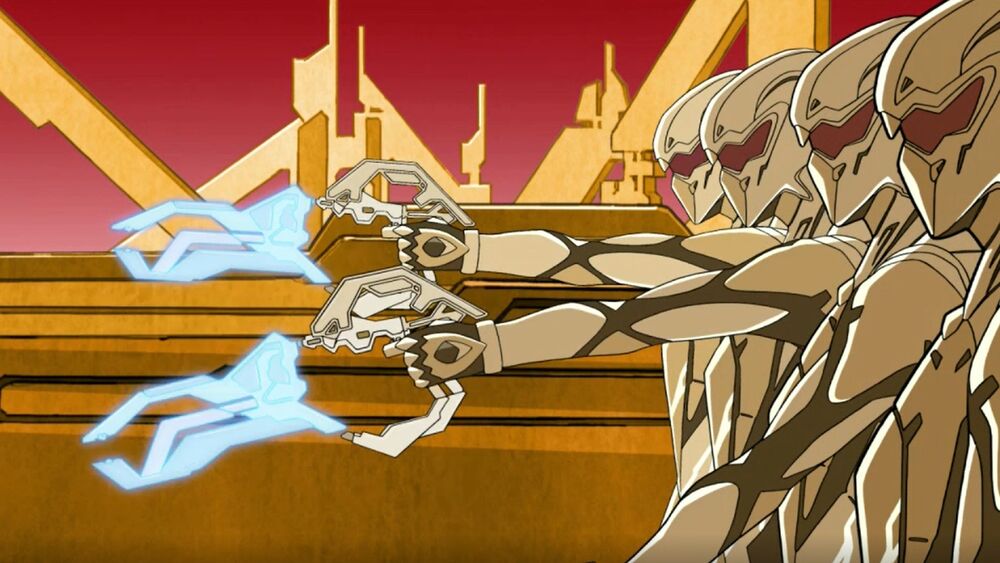
The multiweapon and combat skin that Glory is depicted with in the encyclopedia may look very familiar to those who have seen the 'Origins I' episode of 'Halo Legends.
GRETCHEN KETOLA
Art by Isaac Hannaford
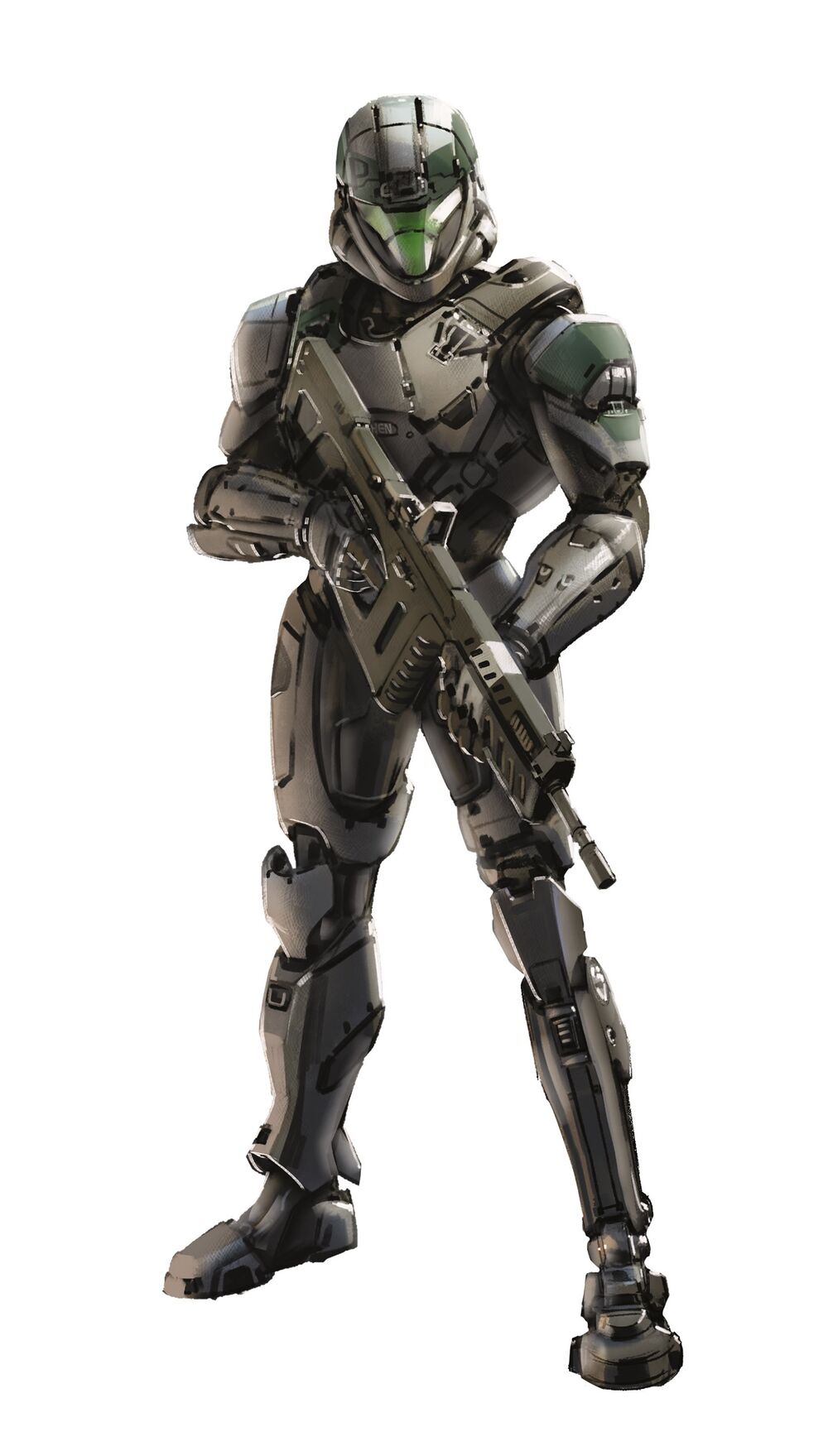
Gretchen Ketola's first major appearance was in the Halo: Helljumper prequel comic for Halo 3: ODST, a five-part story featuring Dutch and Romeo during Operation: FIRESIDE on the colony world Ariel in January 2552.
A former ODST, Gretchen and Dutch served together in the same unit and married each other, but during a mission on Ballast she stepped on an insurrectionist land mine which blew off her left leg. After the Covenant war and the death of the Rookie, Dutch temporarily retired to be with Gretchen, but the two eventually enlisted in the SPARTAN-IV program together where—during the Created uprising—they would join the reformed Alpha-Nine squad.
The encyclopedia provides an up-to-date portrait of Gretchen, but we thought it would be cool to show you the full portrait image which shows Spartan Ketola fully armored with her leg prosthesis.
PART 2: ALTERNATIVE ANGLES & DIVERGENT DEPICTIONS
When we originally previewed the Halo Encyclopedia, you may recall that it featured some alternate views of Lucy, the C-718 Longsword, and a few other pieces that differed from what was ultimately included in the final product.
Well, we also have a number of bonus perspectives of various other characters, weapons, and ships that you didn't see. Let's take a closer look...
BURNBLADE
Art by David Heidhoff
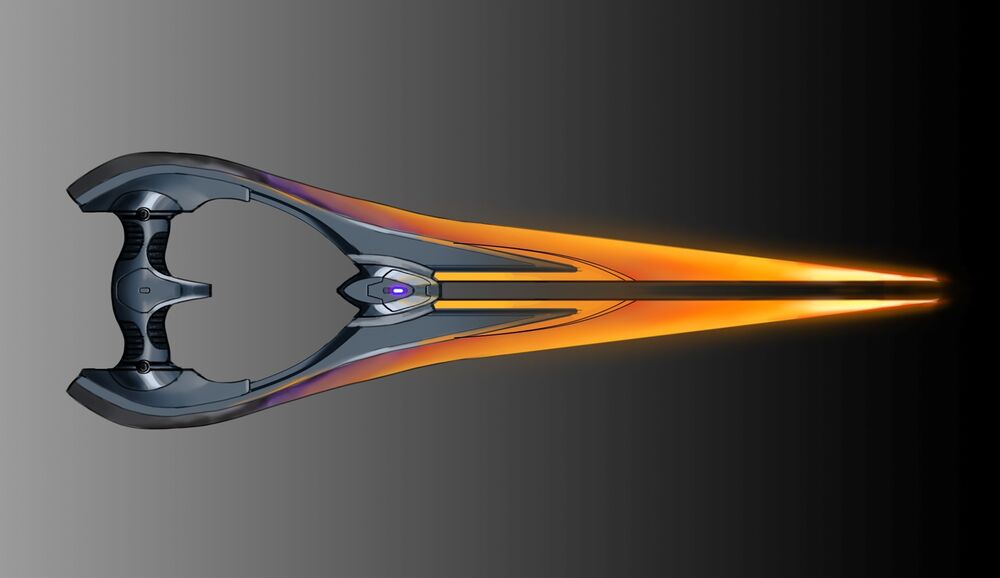
First created by the arms masters of Qikost, one of the moons of Sanghelios, the burnblade was ubiquitous in the early period of interstellar expansion for the Sangheili before the development of the more contemporaneous energy sword.
The Ussans, however, sequestered from the rest of the galaxy as they were from within the shield world known as the Refuge, continued to use this weapon into the modern era. Following their long-awaited reunion with their homeworld, the burnblade has seen a resurgence of popularity—particularly among human pirates.
In the Halo Encyclopedia, we see this weapon wielded by Ussa 'Xellus in his character portrait, but the weapon itself is something we have a wholly separate render of.
KARVE
Art by Martin Deschambault
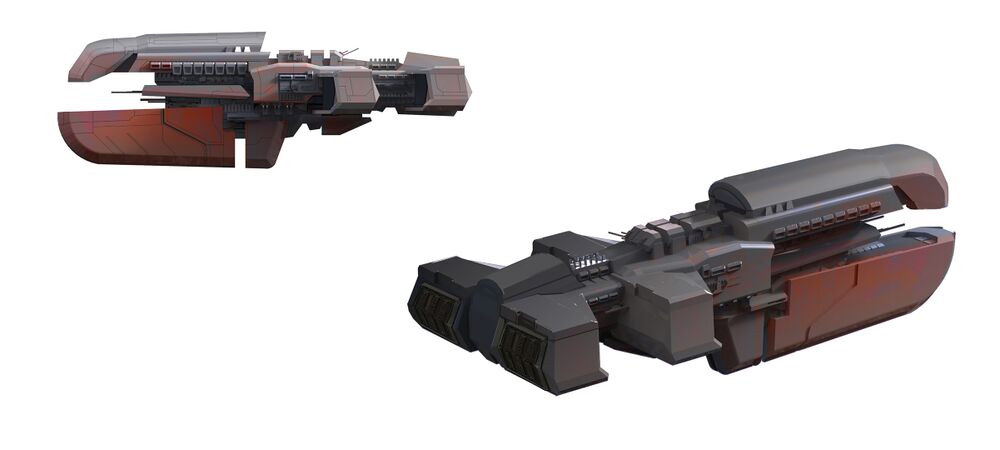
Backbone of the Banished fleet, escort to dreadnoughts, and all-around fan-favorite ship since it was introduced in Halo: Shadows of Reach, the karve finally sees a visual depiction in the encyclopedia.
While this vessel is primarily of Jiralhanae design, the Banished learn from those around them—and so Kig-Yar shipbuilding methods also influenced some elements of its design.
While the encyclopedia features the top-right image in this ship's debut visualization, here are some alternate angles to get a fuller impression of its silhouette.
TRONTO
Art by Zackry Lee
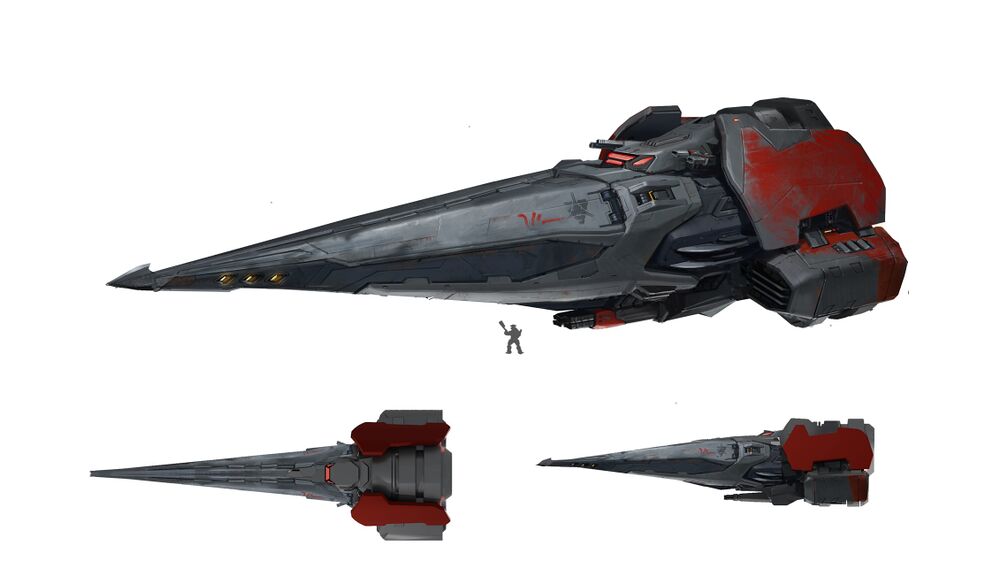
Secretly built by Jiralhanae warsmiths loyal to the Prophet of Truth in the vaults of the Sacred Promissory and the crater-forges of Doisac's moons. The Tronto shown in the Halo Encyclopedia bears the traditional visual hallmarks of Covenant-aligned Jiralhanae, due largely to its inclusion in the empire's relevant section of the book.
However, since this breaching craft would also later be utilized by the Banished, we had artist Zackry Lee provide this 'alternate' depiction which doesn't appear in the book's final version.
BASELARD
Art by Zackry Lee
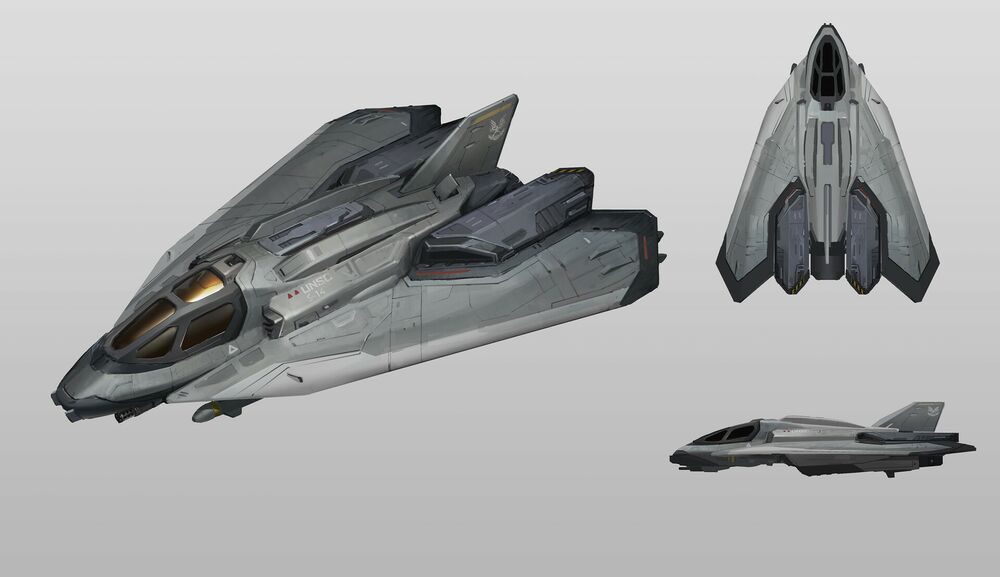
The S-14 Baselard first appeared in Troy Denning's Halo: Silent Storm and packs quite a punch, having been practically unrivaled during its use in the century leading up to the Covenant War.
While the image on the left is the primary depiction of the space striker in the encyclopedia, here are two alternate views!
NANDAO
Art by Sam Brown
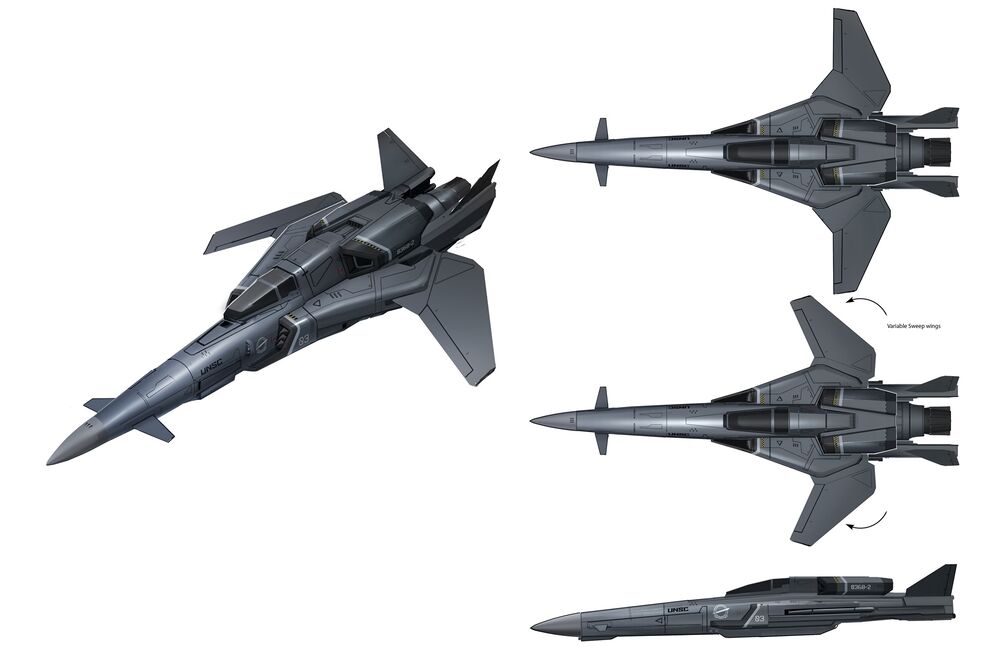
Introduced in Halo: Oblivion, the dart shaped Nandao strike fighter/interceptor gets its first depiction in the Halo Encyclopedia.
Here's an extra look at some alternate angles of the cheeky Nandao.
KURT
Art by David Heidhoff
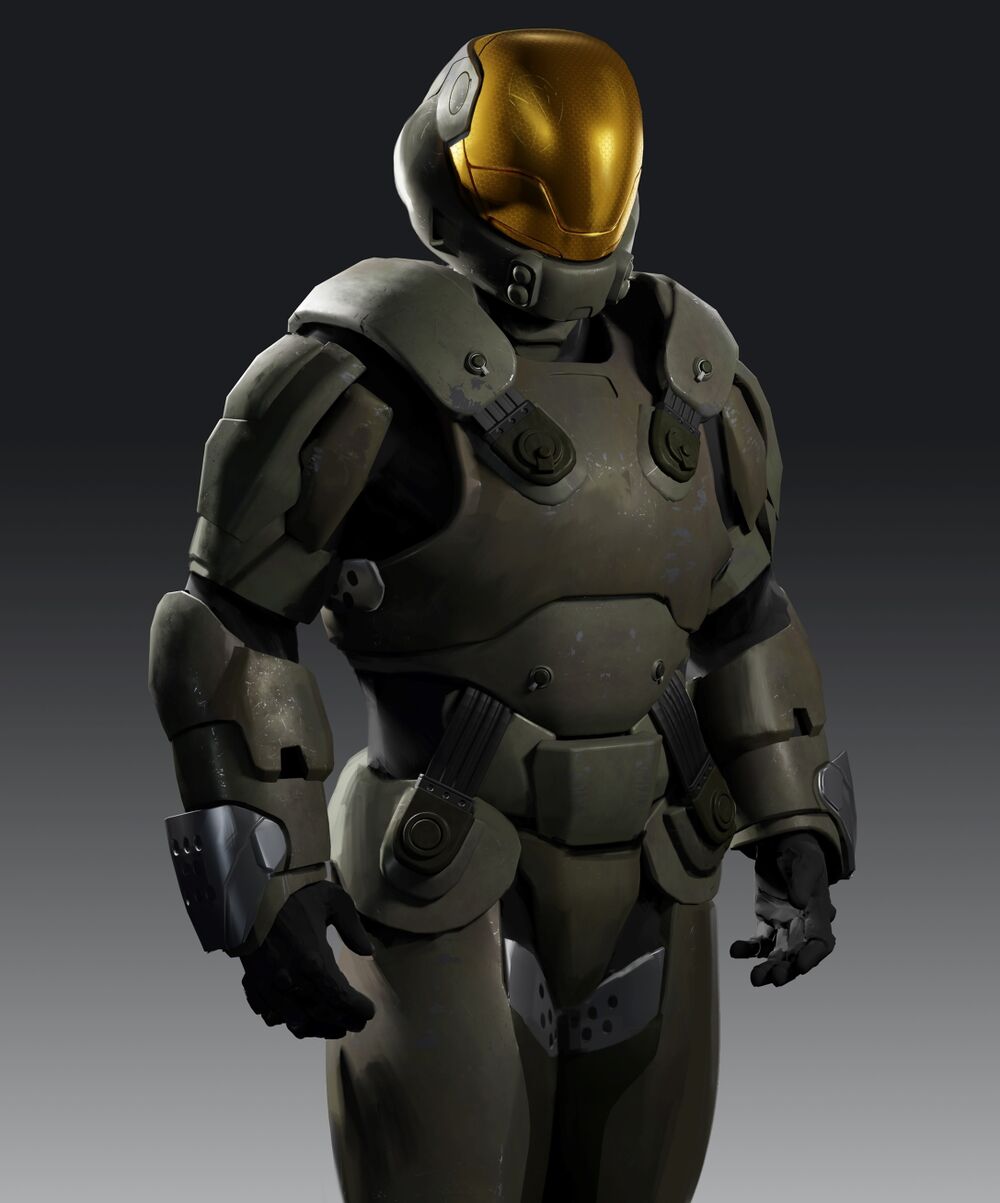
A man who needs no introduction...
Kurt-051 also gets an official new portrait in the Halo Encyclopedia, depicting his face for the first time - isn't he handsome?
We see him clad in his SPI armor, which is—as everybody well knows—some of the coolest armor ever, so let's take a peek at an alternate version with the helmet on, shall we?
DOISAC
Art by Molly McLaughlin
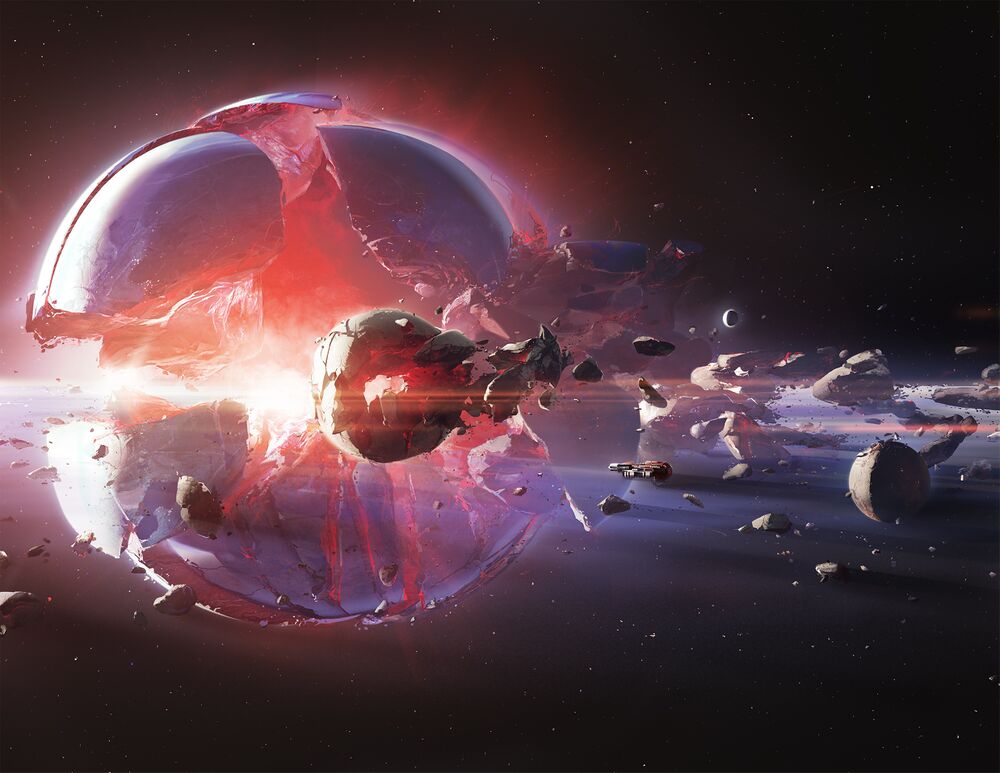
And finally, here is the Brute homeworld of Doisac... RIP.
In the spirit of today's issue, here is an alternative angle of its current state:

Encyclopedia FAQ[modifier le wikicode]
We thought this would be a good opportunity to address some of the common questions that we've seen pop up about the Halo Encyclopedia.
Why was there no Index/Glossary in the encyclopedia itself?
Originally, we had absolutely intended to include an index at the back of the Halo Encyclopedia, but we unfortunately ran into the reality of a page count limit of 488 that we simply weren't going to be able to go beyond.
With that in mind, we decided to opt for including more content within the book itself rather than take up several pages just for the index. While the glossary feature suffered the same fate, we were able to transfer that particular element online, and you can access it on Halo Waypoint whenever you like.
Why wasn't X detail/event/character included?
Despite the encyclopedia's massive size and expansive scope, the sheer volume of available content to pull from over the past two decades of storytelling and world building mean that, no matter what, there were going to be things left on the proverbial cutting room floor.
And trust us, we have lists of our own when it comes to things we would have wanted to either include outright or simply expand even further on than we already did. This is often a matter of logistical consideration around the space we have to work with, as well as balancing how much to cover overall with how much to cover for each item individually. 488 pages is a lot, but it is also finite—there's always more that we want to put in there.
However, that doesn't mean that unmentioned or unvisualized elements aren't important, or that we aren't actively thinking about other potential avenues to potentially dive a bit deeper or showcase certain elements of the universe. Whether it be more information on certain factions, interesting characters both old and new, or militaristic minutiae such as the material threadcount in every UNSC BDU iteration, if it's on your mind, it's probably on ours too—and we're always looking for new ways to explore things further, perhaps in future reference materials or even in later issues of Canon Fodder itself.
Oh, one thing we will clear up though is that the “Honor Guard” and “Councilor” image tag swap was quite unintentional and will most assuredly haunt us until at least the 26th century. /shudder
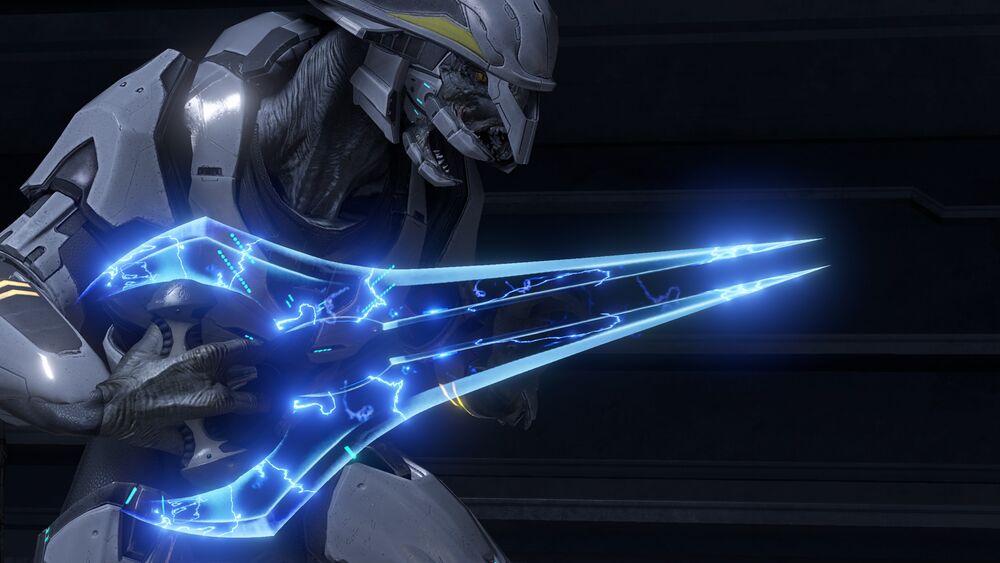
How come there was a list of human colonies but not a list of Spartans and their current status?
Apart from the space limitations already mentioned, we also had to make the best decision for what content we wanted to reveal at this point in our franchise's storytelling.
With the colonies, all of the details we included were mostly already set in stone across various franchise media sources. Note that we didn't include every colony, but enough to show the breadth of humanity's dominion.
With other lists, however, like the statuses of various Spartans, we opted to hold off for the time being for a variety of reasons. So, although we do possess a carefully scrutinized list internally, fans will have to wait on many of those particular details.
What were some of 343's favorite aspects of the book?
We've talked about a few of those elements in the development roundtable (see below) that we recorded for the book's launch, but one thing that might not have been mentioned is many of the deeper details that are tucked away for fans to find—things that might not be Doisac-shattering revelations, but that certainly aim to intrigue detail-oriented readers.
These include things like the name of the world that Snowbound is set on, some backstory bits on a set of Halo 5 Warzone bosses, and more. Happy hunting!
For more development insights into the making of the Halo Encyclopedia, be sure to check out our full roundtable discussion.
Rakshasa Run-Down[modifier le wikicode]
Season 2 of Halo Infinite introduced a new armor core for players to build and customize: RAKSHASA.
Now that you've all had a chance to check out the armor and start making your own Spartan in its image, let's dive into some of the details that RAKSHASA unique.
Originally battle-tested by Delta-6 hunter-killer teams (a classified division of highly trained forward-deployed operators) and disruption operatives who ranged far into the former Covenant core worlds, RAKSHASA would come to be extraordinarily useful in the wake of the Created uprising as the infrastructure of the UNSC was massively disrupted.
Earth had effectively fallen under the control of the Created. The UNSC Infinity was forced to flee into slipspace and remain on-the-run as Cortana's purview over the Orion Arm grew. Supply lines, intelligence, and all the centralized resources that a military relies upon to operate were largely thrown into disarray.
Mjolnir armor itself requires extensive maintenance and monitoring to keep it at peak efficiency during deployments, not unlike a racecar on a track or a sophisticated starfighter being prepped for an intercept. Damaged or otherwise compromised gear can be a death sentence for a Spartan, and as the UNSC shifted to counter the Created threat, so too did Spartan missions and gear.
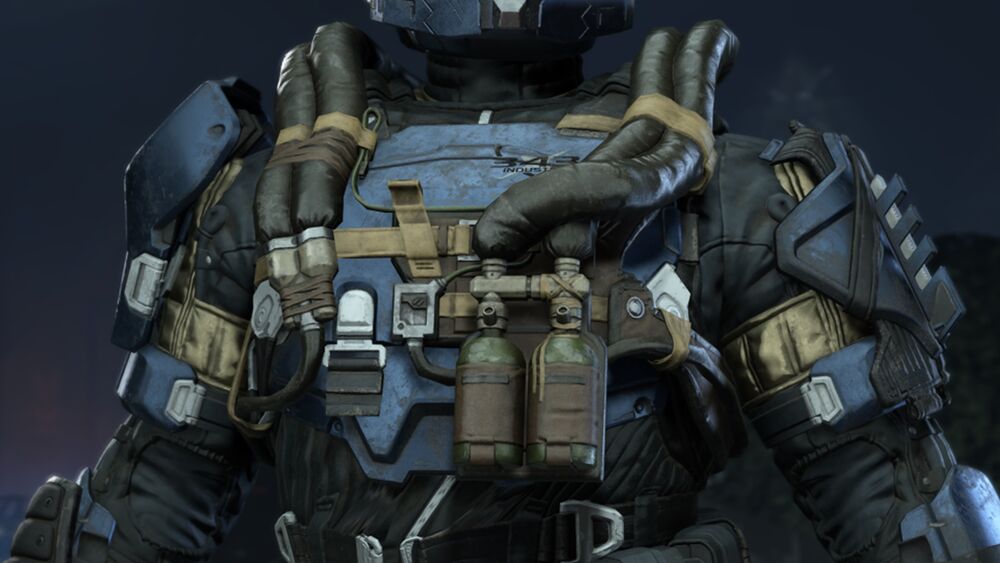
The UTIL/COOLPACK, for example, was a chest attachment designed to counter the Created's knowledge of Mjolnir architecture by adapting cooling technology intended for spacecraft to mask Spartan thermal signatures. The UTIL/COOLSHOT shoulders further assist in reducing the signature of a Mjolnir suit through field-expedient methods of utilizing cryogenic liquids and superconductive heat piping.
Likewise, the FCI-I/SPDR/TRAPDOOR chest attachment boasted Created-specific countermeasures, such as an experimental tactical hacking module, AI containment partitions, and specialist gyroc rounds for delivering network intrusion and burndown filaments into their constructs.
UNSC Infinity scout teams would remain on the lookout for anything of value they could scavenge, searching abandoned bases, CMA depots, and ONI black sites, where they stumbled upon LECHUZA armor. Though clearly intended for Spartan use, its design details and intended role had been purged from the facility's datacore, but study of its attachments presented some interesting implications.
The AML 201-1 CBRN helmet modules, for example, contained an unknown type of programmable matter and hives for nanomachine swarms capable of enhancing the Spartan's respiratory efficiency.
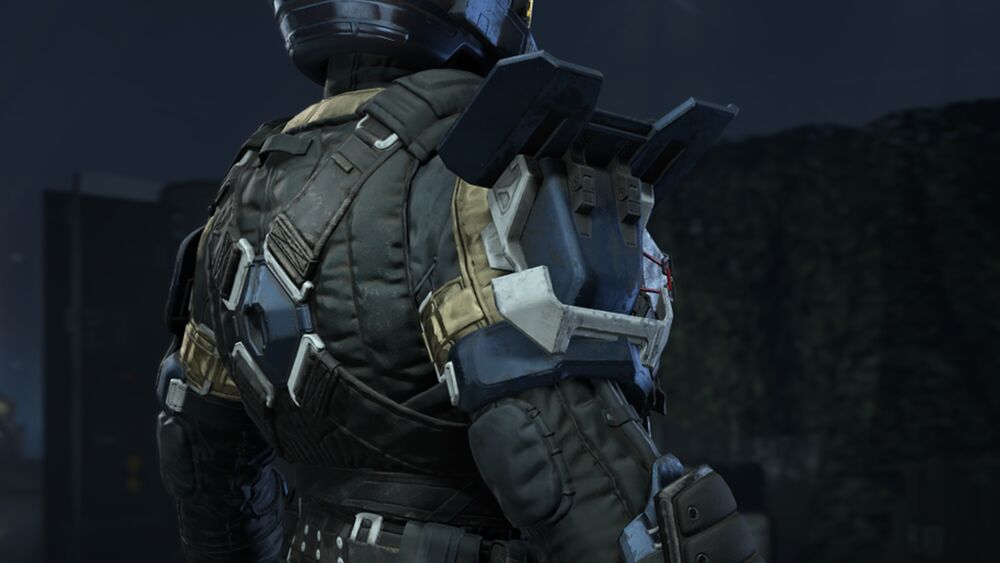
ONI listen-only antenna and decryption modules were adapted for Spartan use as part of their shoulder pads, as network-enabled gear posed a significant risk against their artificial foes.
Adapting to lower-tech hardware, such as the METASHAK TALLYHO “podnets” used by urban youth and frontier communities for localized communications, the remnants of the UNSC was forced to source replacement parts and technology from the pirates, raiders, smugglers, and other rogue elements they had to work with.
Among these were the Kig-Yar on Venezia, who worked with human engineers to perfect the INTERPRES RECEIVER, enabling the user to access UEG, UNSC, Covenant, and Venezian datanets with near-perfect anonymity.
Partnerships with more reliable allies, such as the Swords of Sanghelios, persist in earnest. Tours served with the Swords of Sanghelios have led to Spartans adopting their customs of taking war trophies, as there is limited operational enforcement of standard regulations. The age-old practice, dating back to the Interplanetary Wars, of displaying bullets on the shoulder pad to denote fallen friends has also seen a more common resurgence.
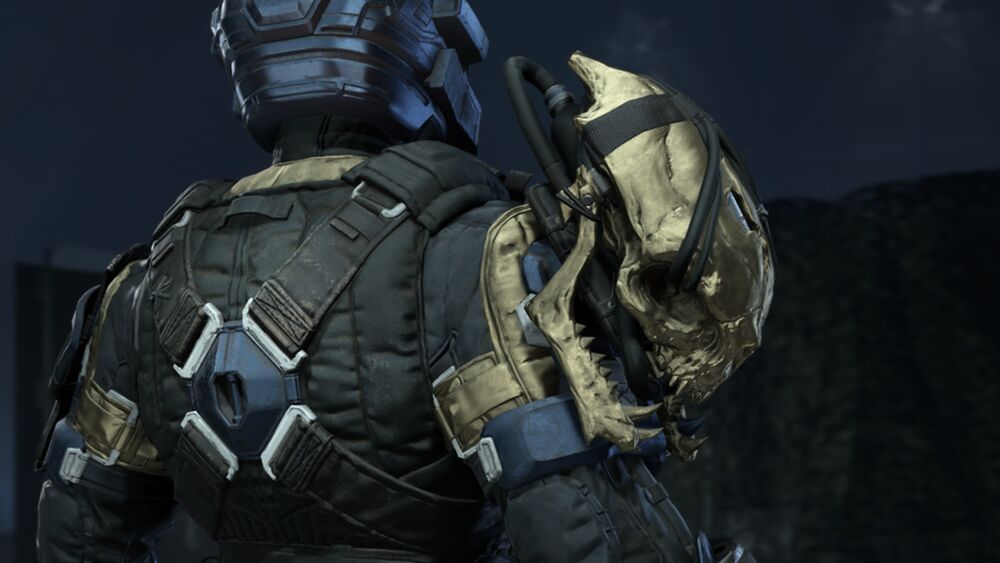
It is notable that the Banished have also keenly learned from “alien” influences. Not content with the Covenant's meagre offering of armor, Atriox codified and standardized many elements of Jiralhanae military design after studying UNSC doctrine. Accessory rails, like those seen on the IRONGRIP RAILS shoulder pads, allow for the attachment of various Banished accessories and equipment packs.
All-in-all, RAKSHASA-class Mjolnir offers armor and operational gear that is versatile, easy to maintain, and comfortable to wear for extended periods, which became a necessity to meet the unpredictably chaotic context and complexities of the galaxy's new status quo.
There's still more RAKSHASA armor to come in Season 2, some pieces will no doubt stir memories tied to some deep lore links, but in the meantime think of this as a broad overview of RAKSHASA and where it fits in the universe.
Celebrating Minutiae, Reveling in Mystery[modifier le wikicode]
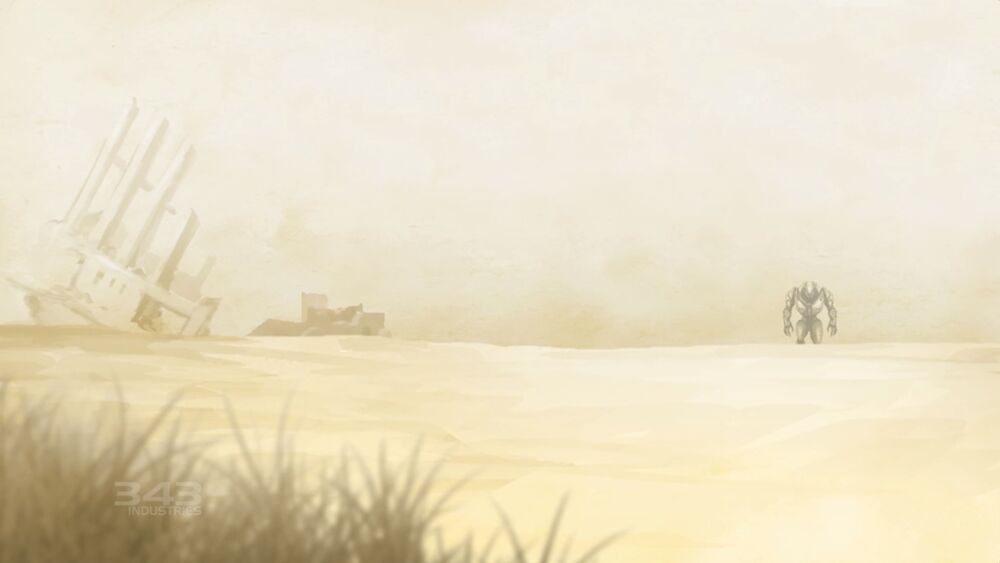
A question posed to us that prompted this section concerned the identity of the Sangheili shipmaster in ‘The Return,’ one of the stories in the anthology novel Halo: Evolutions.
In this story, an unnamed shipmaster returns to the former human colony world of Kholo, which he personally glassed during the Covenant war. In the aftermath of this conflict, he is devoid of purpose and consumed with guilt over the murderous actions he willingly and eagerly participated in at the Prophets' command. Such wanton slaughter looks very different after it was revealed that the Great Journey, the religion that guided them for thousands of years, was a lie.
Stranding himself on the desolate remnants of Kholo, this shipmaster resolves that he will not return to his ship and crew until he finds answers to the question of what new purpose there is for the wretched to find that might lead him to atonement.
That story released well over a decade ago, and the identity of this shipmaster remains unknown.
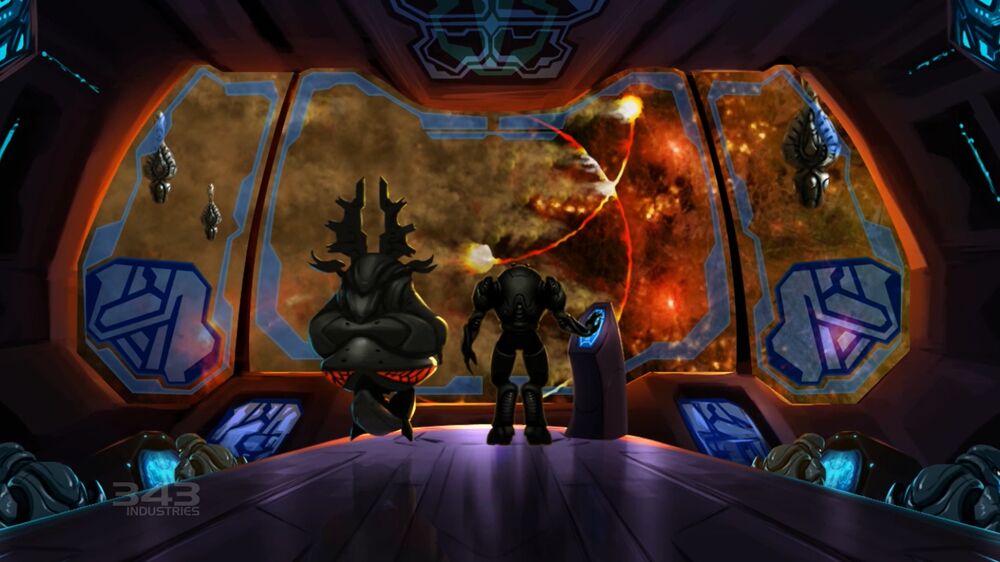
Meanwhile, we have released a 488-page encyclopedia, bringing together and celebrating the incredible breadth and depth of minutiae that exists in the Halo universe.
What are the workshop and pattern names for the various factions' weapons and vehicles? How do their various militaries work and how are they structured? How long is each individual gun? What do these characters we've only 'seen' in printed text look like? What does a list of human colonies look like with their founding dates and current status?
All this and more are covered, but still we refrain from divulging something as seemingly trivial as a character's name?
The answer lies in an important aspect of creative world-building: minutiae of lore can be a marvelous tool to provide a universe with context and flavor—but it should almost always come second to storytelling intent.
This story was particularly notable because at the time Halo: Evolutions released, all the way back in 2009, 'The Return' was our first real glimpse at what the landscape of the Halo universe looked like after the Covenant War.
‘The Return’ is not truly the story of one guilt-ridden Sangheili, but a lens through which the reader understands the more collective experience of the Sangheili as a people after many began processing the lies of the Covenant, greatly recontextualizing their violence. The shipmaster represents something larger than just himself as an individual in this, and so his specific identity doesn't truly matter. There are countless others like him, struggling with the question of what truth is in this new galaxy and what reconciliation there can be for them after the scale of destruction they are responsible for.
After such fearful certainty that the will of their gods was spoken through the mouths of the Prophets, the Sangheili—the ones who enforced that will—must reckon with the fact that those they worshipped have actually been silent all along.
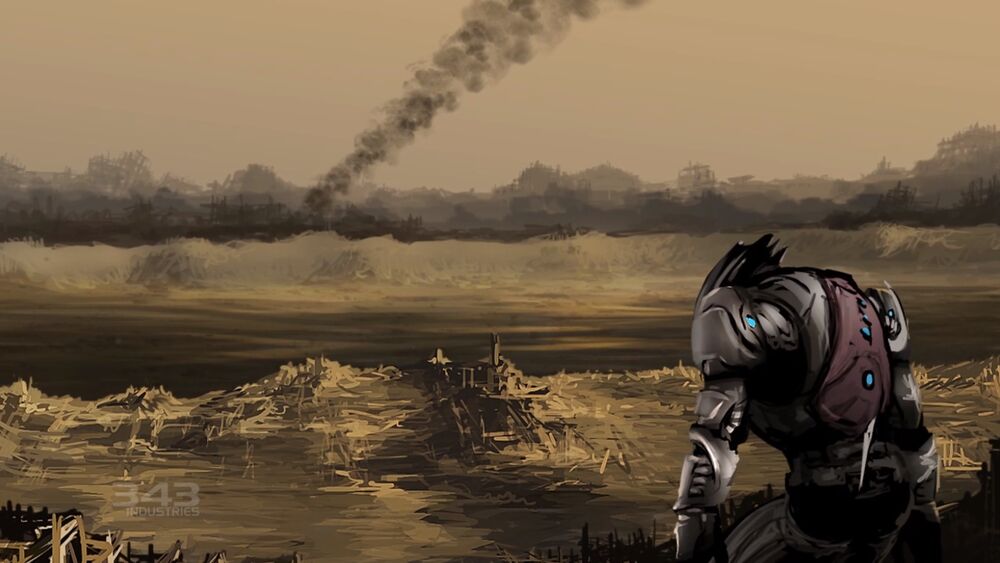
Part of effective storytelling, especially at a franchise level, is knowing what to say and when to say it. This doesn't just go for the question of what doors we're opening (and the questions of why/how/when that inform those deliberate choices), but the ones we choose to keep shut as well.
There is purpose in not knowing certain things. Sometimes it's to maintain that element of mystery which fuels so much of the atmosphere of the Halo universe, sometimes it's because giving specific answers might run counter to storytelling intent, and sometimes it's because it's neither the right place nor time to make a certain reveal. When building things out on a franchise level, looking ahead at what stories we're going to be telling over the course of several years across various media formats, we never want to stymie opportunities to explore things in the past that risk effectively severing interesting connections between existing lore and our future storytelling.
This is, of course, not to say that we will never ever ever come back around to these things at some point in the future, that some stories can be compellingly and unexpectedly recontextualized, but there is a certain ‘sanctity’ to the telling of these stories that must be respected in the ever-ongoing conversation about what doors should be opened and which ones should stay purposefully shut.
We're incredibly fortunate to be working with a universe that allows for so much of both—celebrating that breadth and depth of Halo's minutiae that so many are invested in, but also reveling in the mysteries and unanswered questions that are the source of so much intrigue.
Community Q&A[modifier le wikicode]
EternalCanadian: Do subprowlers possess a slipspace drive? The Owl is described as a low-cost replacement for the black cat and Chiroptera which themselves are described as akin to dropships. Assuming they possess no slipspace drives or cryo facilities, would larger prowlers be on-station to retrace them after an operation?
As a rule, no. Most subprowlers do not have slipspace drives and require support vessels to be moved between systems.
The Owl is a stealthy dropship, not what ONI would consider a subprowler in role or capability. The Chiroptera did have a compact (especially for the time) slipspace drive when in active service, as one of those exemptions to the rule... but the threat profile it faced—and ONI appetite for its maintenance needs—was different than later vessels.
SGTBookWorm: How is Rakshasa armor powered?
Very efficiently!
Drof497: The Halo Encyclopedia mentions that the Unggoy conscript represents the "largest fighting element" within the Banished. Does this mean that the Unggoy (in general) make up the majority of the Banished's numbers, or are the Jiralhanae considered to be the dominant race within the Banished—both in numbers and influence?
Think of this in a similar way to the Covenant, where the San'Shyuum were the 'dominant' species, but they certainly didn't make up the majority of its numbers. At the founding of the alliance, the San'Shyuum were the dominant species while the Sangheili were the largest fighting element.
Unggoy breeding rates certainly put those sorts of numbers into a different perspective, though the ever-evolving state of the Banished as a faction means that those numbers can frequently fluctuate.
TonedStingray18: The encyclopedia says that the stalker rifle is manufactured by the Merchants of Qikost, so was it used by the Covenant or its remnants at all? Did the Banished modify it in any way?
As you may have noted, the stalker rifle is referenced in the encyclopedia under a pattern name (Elutuzem-pattern long shooter)—not a workshop name. We can infer from this that it was indeed utilized by the Covenant in some capacity.

Hazzenkockle: One question occurred to me about the “Covenant Roles” article. It describes Elite Minors as “experienced soldiers,” but we've never seen a lower rank of Elite than a Minor, and the article doesn't describe anything, either. So how do they get that soldiering experience, if they're so far from Spartans we've never even heard of entry-level Elites except by implication, just now?
As some fiction has explored to varying degrees (such as the aforementioned ‘The Return’), Sangheili warriors spend their entire adolescence training for war, and only the best were selected to represent their clan and kaidon in service to the Prophets.
Though not necessarily blooded in war against humanity, Elite minors were no strangers to the arts of war, and universally possessed extremely high motivation to prove themselves. And even after the war, the UNSC is only beginning to unravel the complex rubric associated with the advancement mechanisms of a young Sangheili's early military career.
Commissar_Cactus: What do Rapier and Howler missiles do differently than Archers (as in, why is it beneficial for a ship like Infinity to carry all three types rather than standardizing on one?)?
Archers are relatively cheap, highly adaptable, long-range anti-warship missiles. They are excellent "all-rounder" munitions that can be deployed against most threats that the UNSC faced during the Insurrection and Covenant War eras.
Rapiers can be used in an anti-warship role, but do not fare well against Covenant anti-missile techniques and are best suited for saturation bombardment of fixed facilities (either in space or on planetary surfaces).
Howlers have less individual "punch" and warhead options compared to Archer missiles, but are fast, extremely agile, and excel in saturation strikes against dense anti-missile networks.
The UNSC does not standardize entirely on the Archer (though it remains an extremely capable launch system into the post-War period) for the same reason that contemporary warships carry a mix of armaments—they must be ready to face an array of known and unknown threats, and no one weapon fits every tactical situation or overmatches every enemy defensive capability.
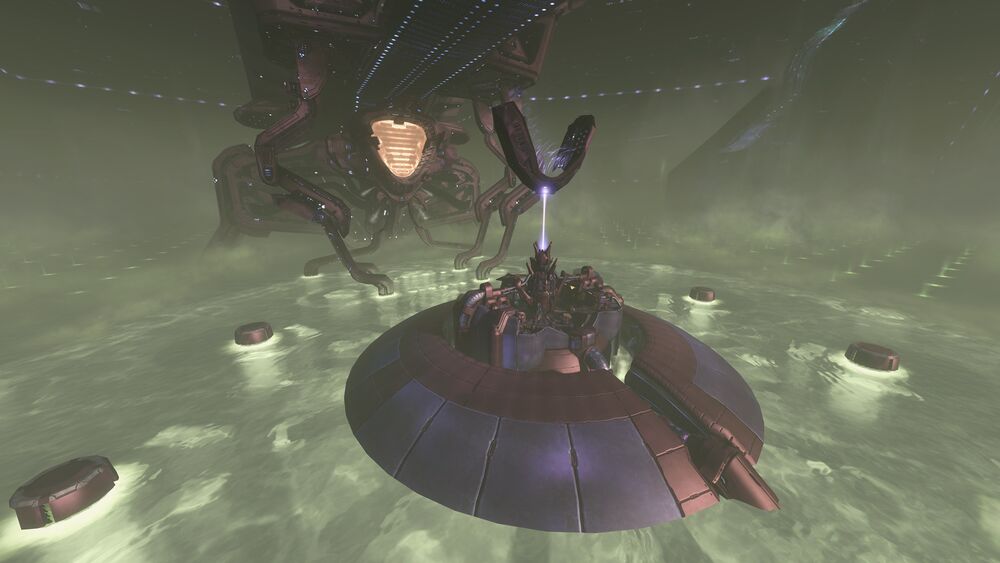
ArthurJack_AW: Is "assembly forge" a generic term or is there really a Covenant company that happens to be called by that name?
‘Assembly forge’ is most often a generic term used to refer to the vast foundries and manufacturing facilities centralized and primarily utilized by the Covenant which produce weapons, vehicles, starships, and other military matériel.
Another month, another Canon Fodder—we hope this one gave you a lot to chew on!
We're (somehow) heading into July next month, which means that Halo: The Rubicon Protocol draws ever closer towards its release date (August 9). But before we look forward, our next Canon Fodder issue will have us looking back—way back—at some things both... unexpected and largely unknown from the early days of the franchise's history.
Until the next time!